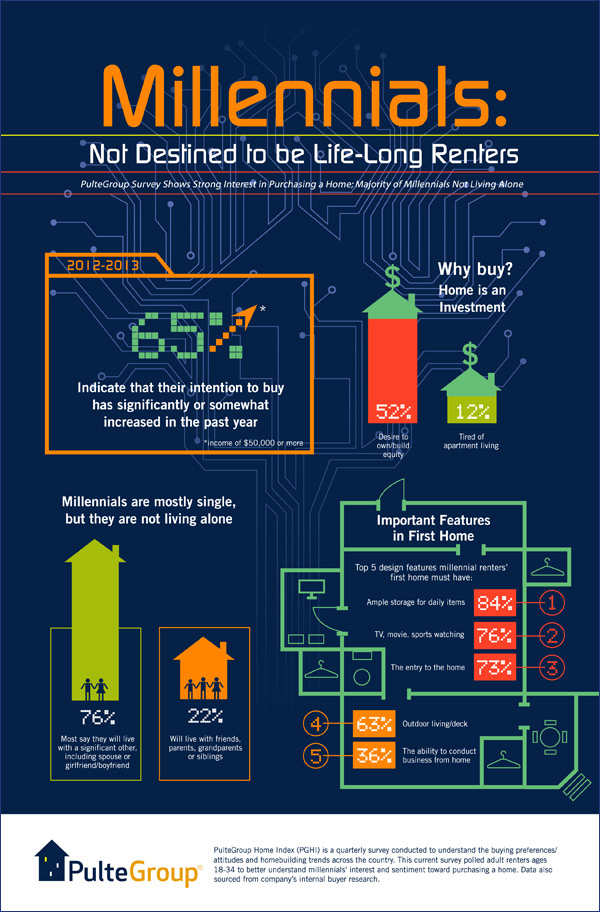Movin’ On Up: Why Americans Are Relocating
Burbs Going Bust
A suburban neighborhood is urban sprawl’s biggest weapon. A large subdivision built a few miles out of town so that residence can be “safe” from the hustle and bustle of the city seems harmless and like a great way to make some money for developers. Years go by, and commercial developers figure out that these residents are living far away from the services they need. These developers build new Wal-Marts, Targets and other big box stores in order to connect the residents of the subdivision with town, and before ya know it, BAM, your little home town is a commercialized, traffic filled suburban city.
It has been commonly believed for years that the wealthy move out of the city and live in the ‘burbs, but according to this infographic, this trend is changing. People are getting smart and realizing that having to drive into town every day is not a fun chore; it would be easier to live in town. This is a great thing. We should be trying to live as close to our goods and services as possible, instead of having the big boxes move to us.
[Via]
Millennials: Not Destined to be Life-Long Renters [INFOGRAPHIC]
Shared with Permission: Millennials Won’t Be Life Long Renters
HOME BUYING: You VS. Your Parents
I often hear from young adults today that they are finding it difficult to establish themselves in the housing market. Owning your own home is a central part of the American dream, and a pretty important milestone in any person’s life, so it’s bad news if young people today are having a tougher go at it than we did. But are they really?
I decided to dig up the statistics all the way back to 1979 to find out how affordable a home has been for the average American over that time period, based on median home price, median family income, interest rates, debt levels, and more. The results were both surprising and complicated, so I decided to present them in infographic form to make it easier for my readers to make sense of all the data I looked at.
Whether you’re a young professional eager to buy your first home, a parent who’s about to send their first child off to a college, or a real estate professional trying to make sense of current trends, pay close attention because it’s time to take an honest look at how the average family has fared over the past three decades.
 source: www.alohatony.com
source: www.alohatony.com
3 Reasons to Sell Your House Today! (Part III)
by THE KCM CREW
This week, we are going to look at the three reasons to sell your house now instead of waiting: demand is strong, supply is low and new construction will soon be your competition. – The KCM Crew
 Part III – New Construction Will Soon Be Your Competition
Part III – New Construction Will Soon Be Your Competition
Over the last several years, most homeowners selling their home did not have to compete with a new construction project around the block. As the market is recovering, more and more builders are jumping back in. As an example, the National Association of Realtors revealed, relative to last year, year-to-date new home sales are up 19%.
These ‘shiny’ new homes will again become competition as they can be an attractive alternative to many of today’s home purchasers.
Here are the numbers regarding new construction about to come to market from theCensus Bureau:
BUILDING PERMITS
- Single-family authorizations in February were at a rate of 600,000.
- This is 25.5% above February 2012.
HOUSING UNDER CONSTRUCTION
- Single-family housing starts in February were at a rate of 618,000.
- This is 18.5% above February 2012.
HOUSING COMPLETIONS
- Single-family housing completions in February were at a rate of 574,000.
- This is 32.9% above February 2012.
As we mentioned, new construction can be strong competition to a seller of an existing home. It may make sense to list your home before this new inventory makes its way to market.
3 Reasons to Sell Your House Today! (Part II)
by THE KCM CREW
This week, we are going to look at the three reasons to sell your house now instead of waiting: demand is strong, supply is low and new construction will soon be your competition. – The KCM Crew
Part II – Housing Supply is Low
 A seller’s ability to sell their home in today’s real estate market will be determined by both the supply of homes for sale and the demand for that housing. In real estate, supply is represented by the current month’s supply of homes for sale (the number of homes for sale divided by the number of homes sold in the previous month).
A seller’s ability to sell their home in today’s real estate market will be determined by both the supply of homes for sale and the demand for that housing. In real estate, supply is represented by the current month’s supply of homes for sale (the number of homes for sale divided by the number of homes sold in the previous month).
While there is no steadfast rule that will apply to pricing in every category of housing, here is a great guideline:
- 1-4 months’ supply creates a sellers’ market where there are not enough homes to satisfy buyer demand. Appreciation is guaranteed.
- 5-6 months’ supply creates a balanced market. Historically home values appreciate at a rate a little greater than inflation.
- 7-8 months’ supply creates a buyers’ market where the number of homes for sale exceeds the demand. Depreciation follows.
What is happening across the country right now?
In most parts of the country, supply is dropping like a rock. According to the National Association of Realtors, total housing inventory is below a five months’ supply. This is almost 20% below inventory numbers of just a year ago and at levels we haven’t seen since 2005.
Based on the table above, we can see that the supply/demand ratio is showing a sellers’ market where prices appreciate. This has created positive movement in housing values in most parts of the country.
Sellers have a great opportunity right now. Historically, inventory increases dramatically as we approach summer. Selling now while demand is high and supply is low may garner you your best price.
Tomorrow, we will look at the competition new construction will create.
3 Reasons to Sell Your House Today! (Part I)
by THE KCM CREW
This week, we are going to look at three reasons to sell your house now instead of waiting: demand is strong, supply is low and new construction will soon be your competition. – The KCM Crew
Part I – Demand for Real Estate is Much Stronger This Year
When selling anything, owners can only hope there is a strong demand for that which they are selling. The great news for today’s home sellers is that the current housing market is experiencing a stronger demand than we have seen in some time.
The spring housing market of 2013 is projected to be one of the best in years.
Home Sales
The National Association of Realtors(NAR) reports monthly on both pending sales (houses going into contract) andexisting home sales (actual closed sales).
In the first quarter of 2013, pending sales have consistently outperformed the numbers reported in 2012. Contract activity has been above year-ago levels for the past 22 months. Before this year, the last time the index showed a higher reading was in April 2010, shortly before the deadline for the home buyer tax credit.
NAR also revealed that closed home sales have been above year-ago levels for 20 consecutive months and sales are at the highest level since the tax credit period of 2009-2010.
Impact on Sellers
This increase in demand has created bidding wars for properly priced homes across the country. This has resulted in two favorable changes for home sellers:
- They are receiving offers closer to (if not greater than) the list price.
- The average days it takes to sell a home has dropped by over 20% from last year.
If you are thinking about selling your home, don’t miss out on the strong demand that exists in the current spring market.
Tomorrow, we will look at the supply of housing inventory that is available.
Housing Scorecard Shows Big Gains in ‘Fragile’ Recovery
 The housing market is making key progress in home prices and sales, but officials warn that the overall recovery remains “fragile” in the Obama administration’s Housing Scorecard for March.
The housing market is making key progress in home prices and sales, but officials warn that the overall recovery remains “fragile” in the Obama administration’s Housing Scorecard for March.
“Despite the positive news, we have important work ahead since there are so many families and individuals still struggling,” says Kurt Usowski, HUD deputy assistant secretary for economic affairs.
In 2012, home owner equity grew by more than $1.64 trillion. Rising home values have lifted 1.7 million home owners above water again, the Housing Scorecard notes.
Home prices and home sales have shown large gains in the past year. Existing-home sales in February were up 10 percent year-over-year, the highest since November 2009. New-home sales were up 12 percent year-over-year in February, which is the second highest level since April 2010, the administration’s report noted.
More home owners are taking advantage of foreclosure mitigation programs. For example, more than 1.5 million home owner assistance actions–including loan modifications and early delinquency interventions–have taken place through the Making Home Affordable Program. More than 1.1 million home owners have received a permanent loan modification through the HAMP program, saving about $546 on their mortgage payments each month.



